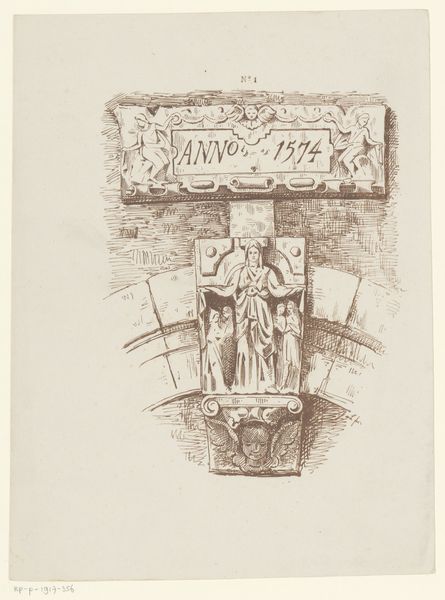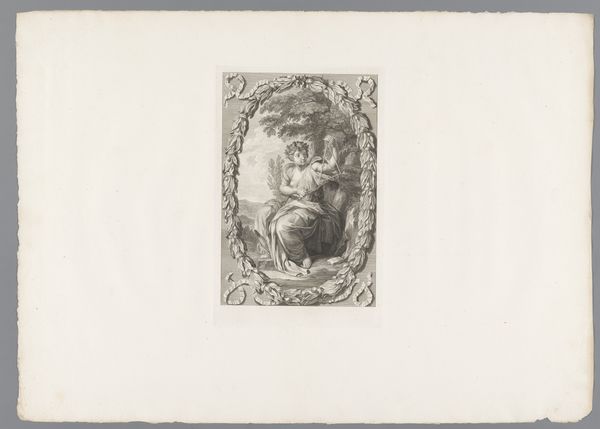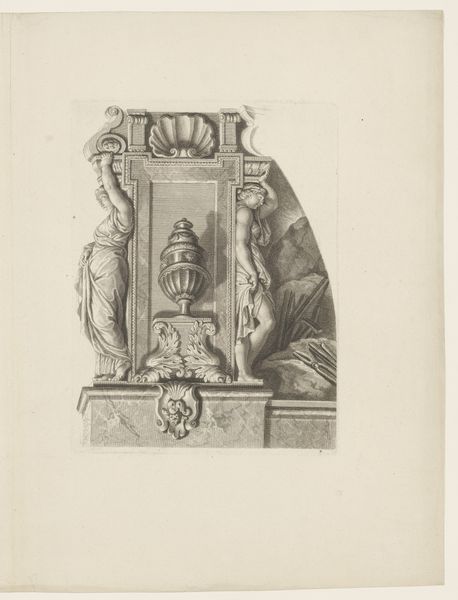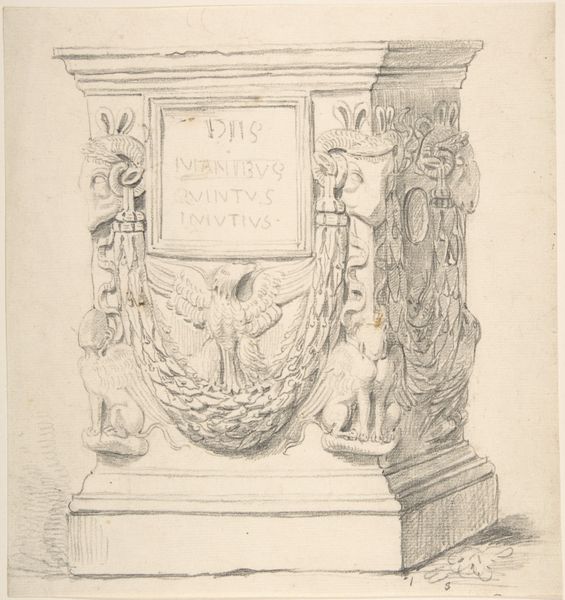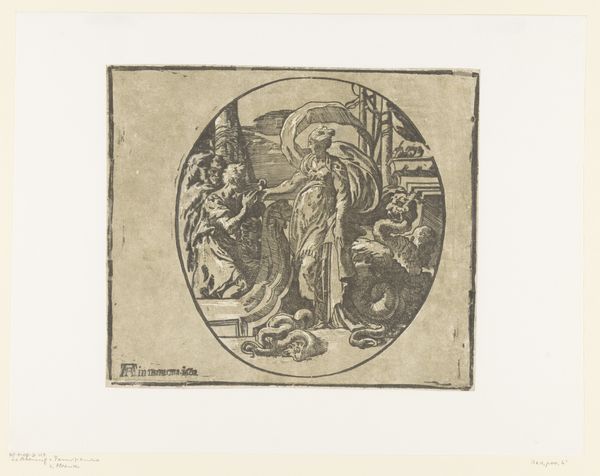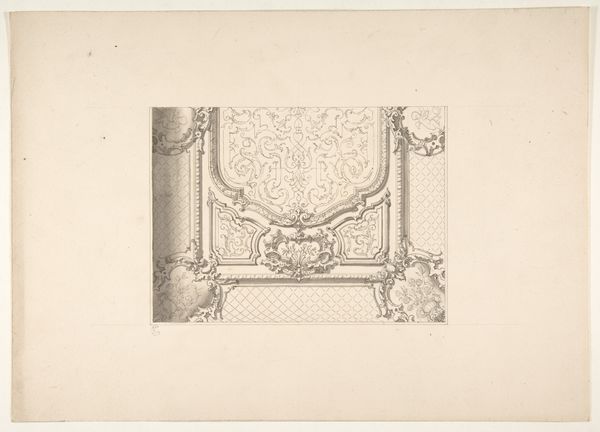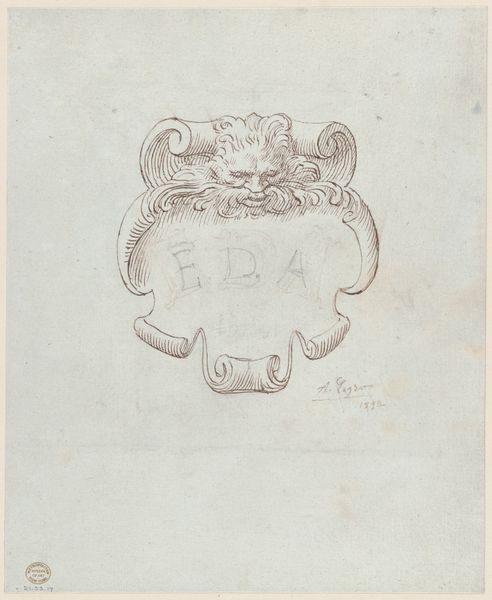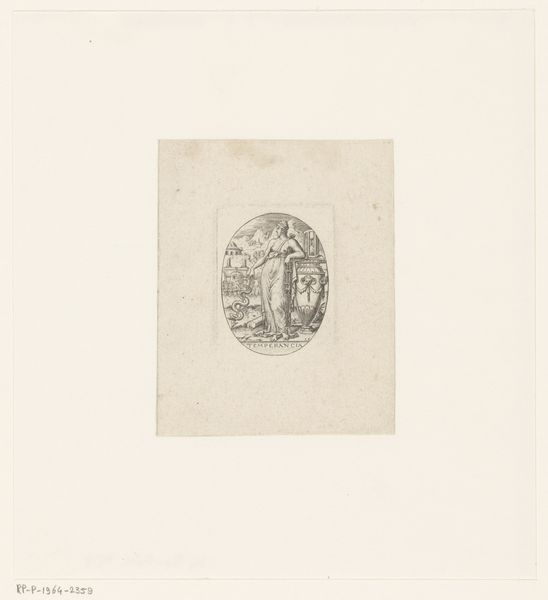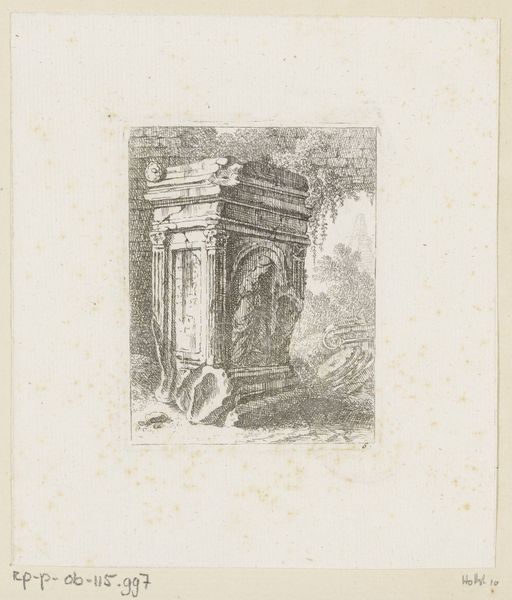
drawing, print, etching, engraving
#
drawing
# print
#
etching
#
old engraving style
#
etching
#
geometric
#
engraving
Dimensions: height 210 mm, width 280 mm
Copyright: Rijks Museum: Open Domain
Editor: This etching by Jac van Looij, made between 1877 and 1894, depicts a keystone with the year 1560 inscribed on it. It has a very graphic feel. What strikes you about the composition? Curator: Its graphic quality is indeed arresting. Primarily, I observe the meticulous linework that defines the geometric forms and the symbolic elements within. The interplay of positive and negative space creates a palpable tension. Editor: I noticed the contrast, how the date and the lion stand out so vividly. Is that part of the intention? Curator: Precisely. Consider how van Looij utilizes the etching technique to render a sense of depth and texture. The strategic placement of light and shadow enhances the legibility of the keystone's features. The symbolic weight of the lion, coupled with the declaration of time, creates an intellectual rather than emotive effect. How does the date influence your interpretation? Editor: It makes me think about history, time passing, and the permanence of architecture. It’s almost like a captured moment from a building. Curator: Your insight brings clarity. Van Looij skillfully manipulates formal elements to generate meaning beyond mere representation. By focusing on the inherent properties of line, form, and composition, we begin to decipher the artist's intended discourse on time, memory and artistic intention. It’s about the enduring relevance of historical fragments rendered in art. Editor: It's interesting to see how a focus on form can unlock historical and artistic intent! It's less about what it looks like and more about how it was created to create the symbolic expression. Curator: Exactly! By carefully dissecting its formal elements, we unravel layers of meaning and engage in the very core of artistic expression.
Comments
No comments
Be the first to comment and join the conversation on the ultimate creative platform.
